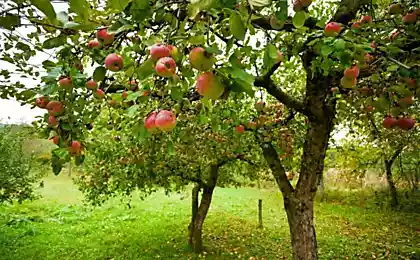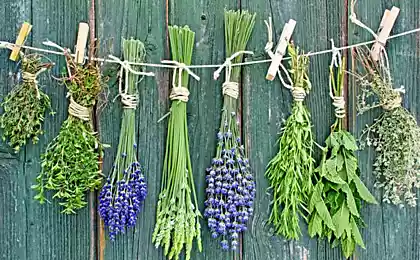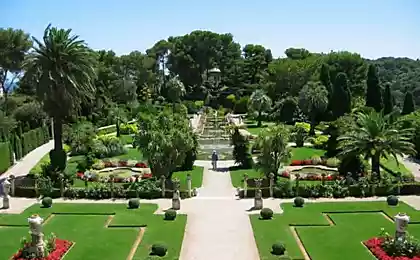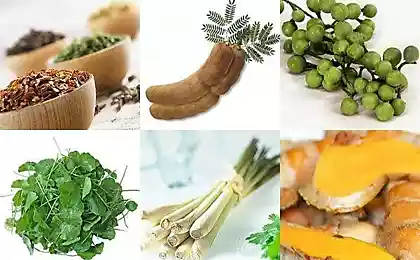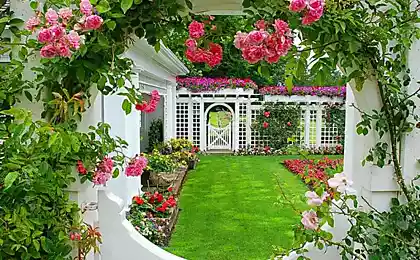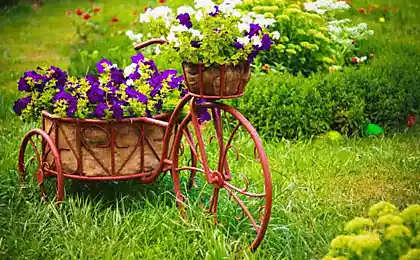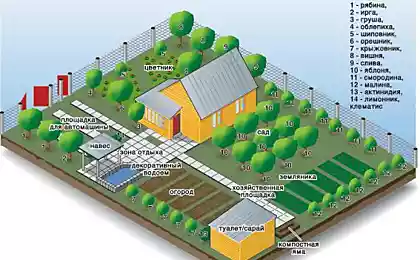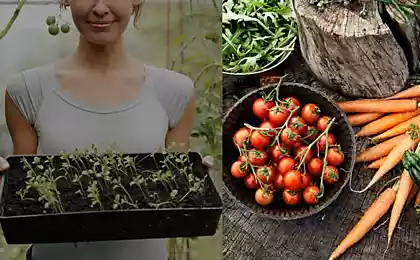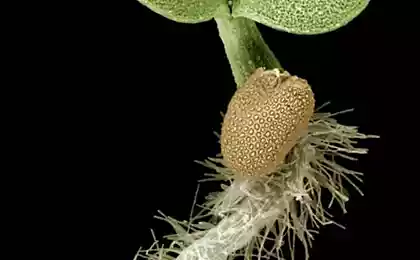545
What is the budding of fruit plants and how to properly perform
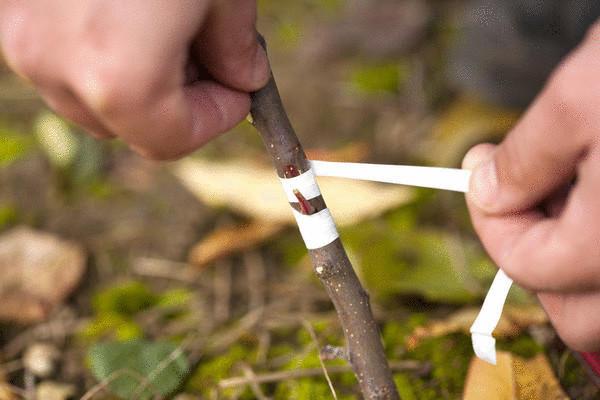
Once you have got the garden and flower garden, the art of grafting trees and shrubs ought to learn is necessary. Moreover, the procedure is not that difficult, and master it be able to every gardener.All kinds of vaccinations — poloskanie than to take up some thing, always good to read the instructions. In the end, turned out that the most important thing we did, and our labour was in vain ;) So should at least run through the eyes, of what we face, learning grafting wisdom.
Depending on the kind of the Scion all vaccinations are divided into three groups:
- Can instill just one kidney — the "eye". This group vaccination is called budding (from the Latin oculus eye).
- Can instill escape handle. These include topolyovka (from the Latin copulo— connect) and a lot of different methods of grafting single and multiple cuttings.
- Can't you do the "whole plant"! In difficult cases, are forced to coalesce two shoots growing near a tree. After the successful splicing of a cultivated plant is separated, and the vaccine remains on the rootstock. This method is called ablative.
- Grafting preklad
- Topolyovka video and improved
- Vaccination in the side desperately
- Grafting the wedge
- Vaccination in the splitting (split)
- Inoculation of the bark (and the bark inoculation with thorn)
- Vaccination bridge
- Inoculation tune
- Ablative (inoculation convergence)
- Budding Priklad
- Shield budding with the wood (without wood) in the T-shaped incision
The site of inoculation on the plant, the rootstock can be selected in any part, depending on what goals you are pursuing. You can instill in root, stem, branches, crown, and even just in the stump.

Distinguish between a vaccinated horse and side. Riding — those in which the cut top of the rootstock and the Scion will be the "top" of the tree, and side grafting are those which are made on the side of the trunk of the rootstock, and the top of the rootstock is not cut.
Depending on the time of year when vaccination is performed, it is called spring, summer or winter.
- The spring is held in the time of active SAP flow from rootstock. The Scion is the material that is harvested in late autumn or early spring and by the time vaccination is still dormant. Spring vaccinations — usually April-may. Landmark — since the beginning of SAP flow before buds swell.
- Summer grafting is done in the second half of the summer. The scions are those buds and shoots which had well developed during the current season. Summer grafts — usually from the 20th of July until nearly the end of August.
- Winter grafting can be carried out in room conditions. Seedling grafted literally at the home table, the accretion occurs in the winter months and in spring you can plant is already grafted trees. By the way, increasingly gardeners manage to do a winter grafting on the trees in the garden, at temperatures below +2°C.
Budding — grafting, glutamate one of the most common methods of grafting. The when budding Scion is a single Bud (or, as often referred to as gardeners — eye). Does she escape cultivars and grafted onto the trunk or branch of a wilding or some other varietal of the plant.

Spring okularow (instill) kidney, which was formed last summer. Take it with cuttings harvested in autumn or in late winter. This kidney will go to growth and give rise to a new run in the same season — so spring budding is called "budding sprouting eye".
But with summer budding inoculation is carried out with kidney, ripened in the current season (cutting it directly from the tree before the operation). It will survive winter in a new place and off in growth next spring. Therefore, summer budding is called "sleeping budded eye".
The advantages of budding
- In connection with a small area of grafting rootstock is almost not injured.
- If the budding is not successful, the vaccine can be on the same rootstock to repeat.
- Requires a minimum of privatnogo material. This is very important if you managed to purchase only 1 stalk of valuable varieties: 3-4 eye will allow you to oculonasal 3-4 rootstock!
- The procedure of grafting takes very little time, for the gardener is also important.
Time okulirovka budding suitable conditions occur twice during the year. Both periods are associated with heavy SAP flow in rootstock:
- early spring, when start to grow buds
- part of the second half of the summer — from late July to mid-August.
Requirements Bodvou and Scion
- For budding are best suited seedlings or shoots of small diameter from 7 to 12-15 mm.
- The rootstock should be young and supple bark, which is easily cut with a knife.
- For budding out flat and smooth internodes, without swellings and knots.
- The buds for grafting are only good fully developed and ripened.
This is the simplest type of budding. Its essence lies in the fact that the rootstock of the blue internode cut off the flap of bark and replaced with the same size flap with kidney, which is cut with the cuttings of the desired varieties. That is, the incision on the rootstock is applied to slice the flap with the kidney.

As deletecache rootstock is cleaned from dust and dirt with a soft damp cloth. Prepare okulirovannyh sharp knife and tape for winding vaccinations.
If you intend to plant a few different varieties, it is useful to procure plaques or ribbons inscribed with the names of these varieties (if not it will seem strange, but almost a third of the vacationers manages to forget that where instilled. You have to wait for the harvest to remember))
Directly procedure of inoculation Priklad is performed in the following sequence:

On the rootstock (on the internode) with a sharp knife shallow bump along the escape 2-2.5 cm, making the "tongue" (1). About a third to half of the tongue cut (1A, 1B).
With cuttings of selected varieties, slice off the flap with the kidney on the size of the finished cut on the rootstock (2-2.5 cm)
Get the shield buds in the tongue. Tweak it so that the visor matched the cut on the rootstock (3). If the flap were able to than necessary, move it so that at least one edge coincided with the slice of bark and cambium.
Tightly bandage the budding tape or a special tape, leaving the outside of the kidney (4). About half of the growers are advised to close under the film and the kidney; both options are equally viable.
After 15 days you can expect the result of vaccinations.
Next video spring budding Priklad for example, mulberry
When budding Priklad escape over the grafted kidney is cut only after complete fusion. With summer budding cut over zaokulirovannye kidney do for next spring, when this kidney will begin to move into growth.
Budding Priklad does not require peeling bark of rootstock, so the timing is much wider than for budding in the cut. This is a big plus for the gardener: you can start vaccinations early — mid-July — and finish later — until the end of August.
Moreover, the thickness of the rootstock is not decisive for the budding Priklad it is possible to use overgrown rootstocks.
Budding flap in a T-shaped razrezami this type of inoculation is that kidney-graft "respond" directly to the cambial layer of the rootstock through an incision in its bark. Therefore, here the crucial role plays the correct choice of the moment when the SAP flow in rootstock most intensively, and the bark makes it easy to enter the graft kidney was a small cut on the shoot.

As teletransport on long complicated name of this method, the budding T-shaped incision is mastered quickly and easily. The whole process demonstrates the concept:
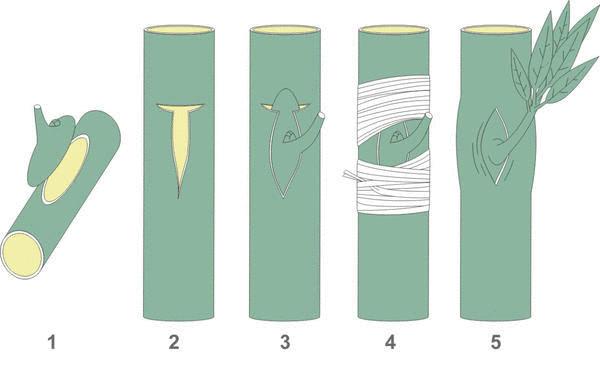
Let's look at each step separately and in detail:
With a handle of wood chosen breed with a sharp knife to cut a kidney together with a thin layer of bark and wood 2.5—3 cm and a width of approximately 0.5 cm This cut called flap (1). Note:
— with summer budding on the Bud, which was chosen for grafting, it is necessary to leave part of the petiole, which will be convenient to take the flap (which is well shown in the diagram);
— when spring budding when the stems on the cuttings, you can cheat is to cut the plate ahead of 4-5 mm at the top, then it will be possible to take this long edge, and after the introduction of the flap into the pocket extra top cut.
On the shoot or stem of a rootstock (the wilding, or the tree on which you want to see the fruit of another variety) make T-shaped incision, the size corresponding to cut the flap (2). He performed in the following sequence: first a horizontal cut, then vertical. Gently peel back edge of the vertical incision to form a pocket flap.
The resulting pocket from the top down stick the flap with the kidney (3). The lower edge of the flap is fixed by a narrow base of the pocket, and the top, if it was higher cut, accurately cut with a knife along the line of the horizontal incision.
Inserted the incision the flap tightly bandaged with plastic tape or duct tape (4). The dressing should start from the bottom, good holding the flap to the cambial layer of the rootstock. Kidney it is recommended to leave open.
Roughly 15 days when spring budding Bud should sprout, and when summer left the stem should easily separate from the kidneys to the touch. This will indicate the success of inoculations.
If the spring Bud remained indifferent, and the stalk turned black in the summer... would be a shame, but the experience gained, the second time stepping will be much easier))
And the following video will introduce you to another way — budding T-shaped incision without wood, which does not cut, and the failure of the bark flap from the handle. This option is suitable for budding cherries and roses, whose cuttings are often thin and not very convenient to cut the shaft in the usual way.
Advice from experienced growers
- For budding, select only those trees whose crown of branches no thicker than 10-11 mm. If the branches are thicker 12-15 cm, better is to apply the vaccine with the handle.
- Try not to make budding from the South side of the branch or trunk. The sun can dehydrate the vaccine.
- To provide greater adaptability, can be budding two eyes on different sides of the rootstock. Both eyes in this case can be fastened at the same time.
- Do not use when budding putty, plastic tape is sufficient to protect the vaccinated.
- On one branch it is possible to "deliver" not one, but several buds. Only distance between them leave at least 15, and even 20 cm.
- The bottom of the eye try not to instill closer than 25-30 cm from the bifurcation of the trunk.
- If your inoculation has failed, it can be repeated if the bark on the rootstock is still separated.
- In the rain to oculonasal you should not.
- In the spring and summer cloudy days, the budding can be performed at any time, but on Sunny days it is better to do in the morning or evening.
- With summer budding for two weeks I stock well watered if the weather is dry. So you will contribute to the active SAP flow.
- For budding choose best buds-eyes that are in the middle of the shoot.
- Cutting to the point of inoculation must already be fully Mature. To check maturity, it is necessary to bring the handle to your ear and start cranking. If you hear a slight crackling — so feel free to take the cuttings for budding, it is Mature.

Method of inoculation suitable for almost all fruit trees, berry and ornamental shrubs, and master it — at least, it is necessary (a maximum — cool))
And by and large, the cottager, who will master the technique of vaccination, will have a real opportunity to grow your garden, settle in it is those varieties of those forms, which he loved, and sunk into the soul. published
Source: www.7dach.ru
Humor is the way that evolution tells us about the architecture of the brain
Amazing palm trees of the cocora valley in Colombia









